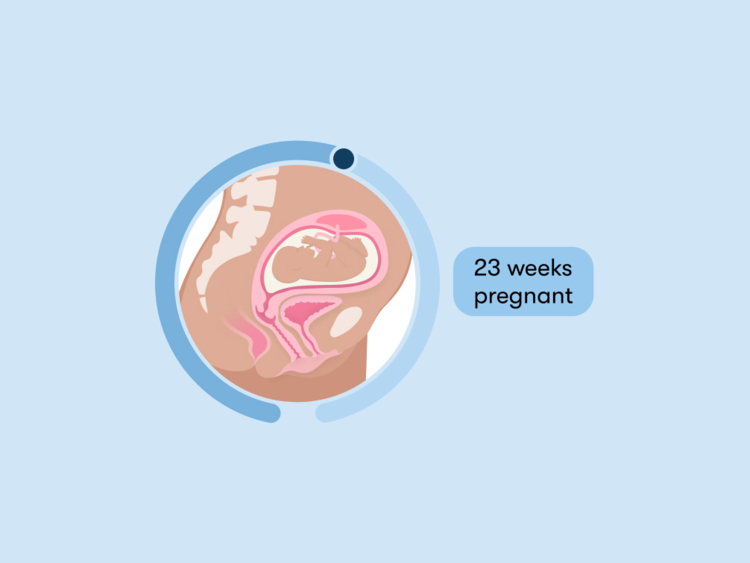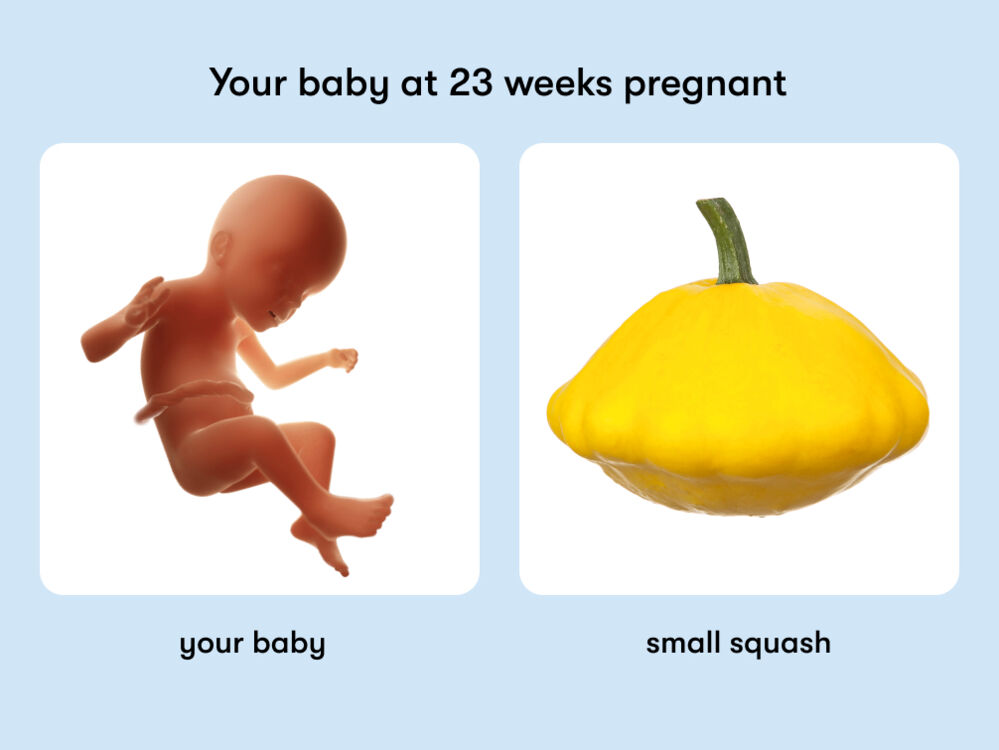At 23 weeks, you’re over the halfway mark in your pregnancy, and your baby is hitting exciting new milestones. While they are still only the size of a small squash, they’re already starting to practice breathing, and their movements will start to feel stronger and stronger.
And it’s not just your baby that’s changing; there’s a lot going on in your own body, too. Keep reading to find out more about the symptoms you can expect at 23 weeks pregnant, plus lifestyle tips for a healthy baby and mom, and advice from a Flo expert.
Your baby at 23 weeks pregnant
Practicing breathing actions
This week, your baby is practicing how to breathe, although they will continue getting all of their oxygen from you via the placenta until they’re born. By 36 weeks, their little lungs will be fully developed and ready to go.
Feeling stronger movements
You may also start to feel the sensations of your baby’s movements become stronger this week. Their kicks may even start to make your tummy move, which can be a strange, wonderful, and funny experience all at once. The movements may also feel strong enough now for other people to feel them on your belly, which can be a lovely way for them to bond with your baby.
How big is a baby at 23 weeks?
Length (crown to heel): 30.6 cm or 12.1 in.
Weight: 568 g or 1.3 lb.
Size: Equivalent to a small squash
All measurements are approximate and vary within the normal range.



